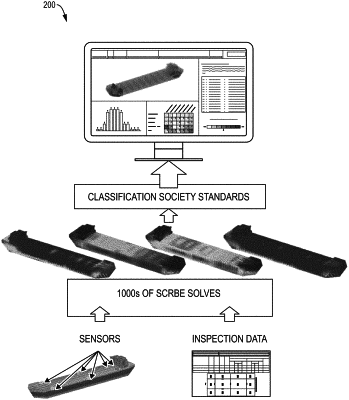| CPC G06F 30/10 (2020.01) [G06F 30/23 (2020.01); G06F 2111/10 (2020.01); G06F 2113/26 (2020.01)] | 19 Claims |

|
1. A method for maintaining a physical asset based on recommendations generated by analyzing a model of the physical asset, the model comprising a plurality of components and forming a physics-based digital twin of the physical asset, the method comprising:
(a) constructing, by a computing device, using a port-reduced static condensation reduced basis element approximation of at least a portion of a partial differential equation, a composite model of a plurality of models, each of the plurality of models representing at least one of a plurality of components, each of the plurality of components representing at least one region of a physical asset;
(b) analyzing, by the computing device, for at least one model in the plurality of models, an error indicator identifying a level of error associated with the at least one model, to determine that the identified level of error exceeds a tolerance level;
(c) increasing, by the computing device, a number of basis functions in the port-reduced static condensation reduced basis element approximation, based upon a determination that the at least one model has a level of error exceeding the tolerance level;
(d) repeating (b) and (c) for each model in the plurality of models until the level of error for each of the plurality of models is beneath the tolerance level;
(e) receiving, by the computing device, from a sensor associated with the physical asset, during a thermal event, first operational data associated with at least one region of the physical asset represented by at least one parameter of at least one component in the plurality of components;
(f) updating, by the computing device, the composite model, based upon the received first operational data; and
(g) providing, by the computing device, a recommendation for maintaining the physical asset, based upon the updated composite model.
|